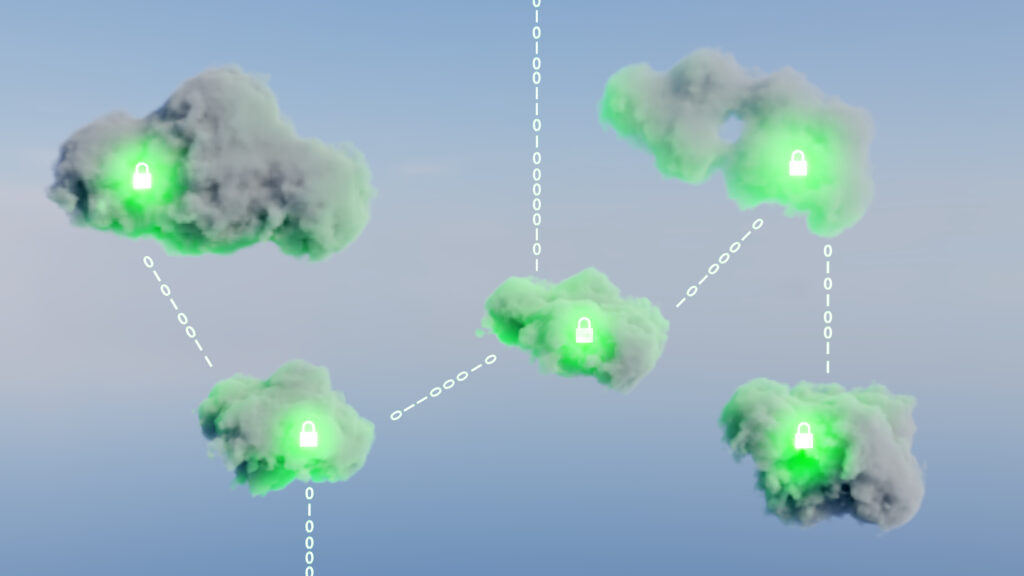The increasing complexity of today’s hybrid networks can make audit preparation a difficult, labor-intensive activity. Whereas most network security (NetSec) teams have a deep understanding of on-prem security, the mass migration of data and applications to the cloud has introduced new challenges that make continuous compliance an elusive feat. In fact, Flexera’s 2022 State of the Cloud report found that compliance is a top cloud challenge for 76% of organizations.
Here’s how enterprises should think about audit readiness in today’s hybrid networks as well as guidance for turning cloud compliance into a competitive advantage.
What is audit readiness?
Audit readiness is the state of being prepared to undergo and pass a security audit. As it relates to NetSec, audit readiness involves ensuring that the organization’s network infrastructure, security controls, and practices comply with relevant security policies, industry standards, and regulatory requirements. This includes having necessary compliance documentation built into network security processes.
Examples of standards and regulations that an enterprise may have to comply with include:
- The Health Insurance Portability and Accountability Act (HIPAA) is a U.S. federal law designed to protect electronic health records and healthcare-related data. Organizations that handle protected health information (PHI) must implement specific security measures to ensure the security and privacy of patients’ sensitive data.
- The North American Electric Reliability Corporation Critical Infrastructure Protection (NERC CIP) is a set of standards designed to enhance the security and resilience of the bulk power system in North America. NERC CIP provides guidance for cybersecurity practices such as security vulnerability remediation, incident response, and segmenting network access to critical assets.
- The Payment Card Industry Data Security Standard (PCI DSS) outlines the security requirements and best practices (network security, access controls, data encryption, security policies, etc.) organizations must follow when handling payment card data. It is mandatory for all organizations that store, process, or transmit cardholder data.
- The Sarbanes-Oxley Act (SOX) is a U.S. federal law designed to improve the accuracy and reliability of financial reporting by publicly traded companies. It also covers the protection of financial data, requiring companies to implement and maintain strong security controls over IT infrastructure and applications that house financial information.
For NetSec, an audit will assess the effectiveness of the organization’s network security controls, identify potential vulnerabilities, evaluate the level of security risk, and ensure that appropriate measures are in place to protect the network from cyber threats. Audits can either be internal or external:
- An internal audit is conducted by employees or a specialized team within the organization. The primary goal is to identify and address vulnerabilities and noncompliance with internal policies and procedures. In many cases, internal audits are done in an ad hoc manner to prepare for an external audit.
- An external audit is conducted by an independent third-party firm or external auditor. The primary goal is to ensure compliance with external requirements dictated by regulatory bodies, industry standards, and/or contractual obligations. External audits are often performed at specified intervals (annually, biannually, etc.) or in response to business events, such as mergers and acquisitions or regulatory inquiries.
How does the cloud make audit readiness more difficult?
While most NetSec teams have a strong familiarity with compliance and audit readiness in traditional on-prem networks, the cloud has introduced new complexity that makes audit readiness more challenging than in the past. There are much more established guidelines and playbooks for traditional networks compared to the cloud, which is why hybrid security can feel like uncharted territory for these teams.
For instance, most cloud service providers (CSPs) follow a shared responsibility model in which the CSP takes responsibility for the security of the cloud infrastructure while the customer is responsible for securing their data, applications, and configurations. This division of responsibility can lead to confusion during audits about who is accountable for certain security measures.
According to Gary Carrera, Internal Auditor and Manager of the Global Data Protection Program at Meta, “There is a higher risk of data breaches with the increasing number of unsecured cloud services available out there; not all cloud providers and/or cloud customers are mindful of following industry-standard best practices to protect their services and the data stored in them.”
Additionally, cloud environments are always in flux as resources are provisioned and deprovisioned on-demand. This fluidity can pose problems when it comes to tracking and maintaining a consistent, up-to-date inventory of assets, configurations, and access policies. The challenge is further compounded by lack of visibility in the cloud — without unified, end-to-end network visibility, NetSec must use a range of tools and check multiple consoles just to gain a vague picture of the current state of the hybrid network.
At present, response to audits and reporting requests is often a painful, manual process that takes longer than it should. Not only that, the state of security and compliance reached for a given regulation is only upheld for a brief period of time — long enough to pass the audit — and then things quickly drift back into an unsecure, noncompliant state. This is a major reason why security and noncompliance incidents are still prevalent. A study from Thales and 451 Research found that nearly half (45%) of organizations suffered from a cloud data breach or failed audit in 2022, a 5% increase over the previous year.
The best way to achieve audit readiness
Audit readiness is valuable because it improves the security posture of an organization, cultivates trust with customers and partners, reduces the risk of noncompliance penalties, and supports stakeholder value. Ideal audit readiness is attained when an organization can:
Achieve continuous compliance, a state in which security and compliance requirements are met and maintained over time.
- Quickly demonstrate compliance to auditors without straining resources or impacting the speed of the business.
Tufin helps enterprises meet both of these needs under the same roof. It provides a central console for facilitating, maintaining, and demonstrating continuous compliance with industry regulations and internal policies across firewalls, routers, software-defined networks, hybrid cloud, and multi-cloud environments. Tufin gives NetSec teams the ability to:
- Always see and understand the current state of hybrid network infrastructure and identify areas that don’t comply with policies.
Set up and issue real-time alerts for automated monitoring to ensure continuous compliance.
Define a Unified Security Policy that works across even the most complex infrastructures (multi-vendor, multi-platform, multi-cloud, etc.) to simplify the review and management of policies.
Access and automate an audit trail of all changes and approvals which can be used to instantly generate a variety of customizable audit reports for standards such as PCI DSS, NIST, SOX, NERC CIP, and more. Tufin also helps organizations identify compliance violations before they occur as part of the automated change process.
Simply put, achieving continuous compliance and audit readiness for the hybrid network is impossible without an automated solution like Tufin. It is just too much to keep track of — since everything changes so quickly in the cloud, any manual, “snapshot in time” inventory of controls almost immediately becomes obsolete.
Network security automation for superior audit readiness
Tufin is the ultimate security policy automation platform that helps businesses achieve audit readiness and continuous compliance while saving time and increasing agility. Don’t just take our word for it —the Total Economic Impact of Tufin report conducted by Forrester found that Tufin enables a 95% efficiency gain for audit preparation and reporting activities. A large utility company in EMEA, for instance, used Tufin to cut down audit preparation to just one to two days and eliminate reopened audit requests — and related rework — altogether.
Interested in learning more about overcoming the complexity of today’s hybrid networks? Download Six Ways the Cloud Changes Everything about Enterprise Network Security to find out how to remediate security issues more quickly, maximize efficiency, and stay audit-ready year round.
Ready to Learn More
Get a Demo





